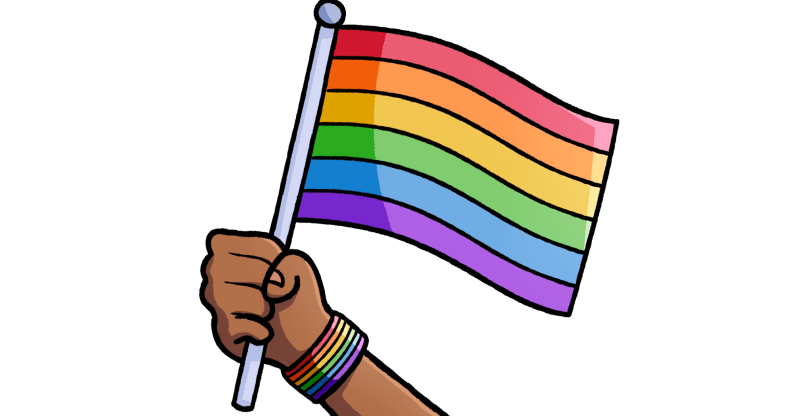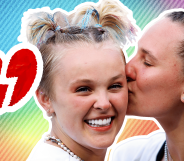Gay by nature: Part one

What causes homosexuality? Can sexual orientation be changed? And are the brains of gay people different from those of straight people? Adrian Tippetts meets Dr Qazi Rahman, an assistant professor in Cognitive Biology from Queen Mary University London, to find out more.
While almost all scientists accept homosexuality has purely natural causes, the debate has been mired in confusion. There have been conflicting reports about the existence of ‘gay’ genes and their significance. Religious propagandists have tried to promote the myths that sexuality is changeable. And the mainstream media, more interested in causing controversy than holding rational debate, has done little to raise public understanding about the issue. For Dr Rahman, who heads QMUL’s Biological and Experimental Psychology Group, it is quite clear: you’re born gay, and that’s that.
I begin by asking him what aspects of biology are responsible for sexual orientation.
“The whole nature-nurture debate is entirely pointless,” he says. “Sexual orientation is not a choice because humans come in two types: one with a vagina, the other with a penis, so sexual orientation is entirely biological.
“We all end up at the same point: heterosexuality or homosexuality. There is little variation in between but this is not to exclude bisexual behaviour. People do not end up sexually attracted to bananas or animals for example. This is not a flippant comment. What I am saying is that we see the same characteristic traits and behaviours, resulting from a relatively small number of factors.
“We think the causes for different sexual orientations cluster around two areas. We know that just under half the variation in sexual orientation is down to genes. Then the rest of the variation is down to ‘non-shared’ factors, and those, like hormones, are primarily biological.”
At this point a little background is needed.
Dr Rahman explained that the gene story originated in 1993, when geneticist Dean Hamer published a study that claimed homosexuality was genetically influenced, and pinpointed the stretch of the X chromosome (inherited from the mother). He studied 76 pairs of gay brothers and found they shared a stretch of DNA. However, since then no research has been able to repeat the test.
Despite the shortcomings of Hamer’s research, scientists agree the environmental factors do not cause homosexuality. It is increasingly clear that no single gene is responsible for sexual orientation. Furthermore, William Reiner at the University of Oklahoma surveyed the sexuality of a group who had been surgically reassigned from boys to girls at birth, due to genital deformities. Though they were brought up as women, and knew nothing about their surgery, they were all attracted to women later in life.
Michael Bailey of Northwestern University found that an identical twin of a gay man had a 50 per cent chance of also being gay. Among fraternal, yet non-identical twins, that probability was reduced to 20 per cent. This latter statistic does not in fact downplay the role of genetics, because not all the genes we inherit are active. We receive two alternative genes of every gene – one from each parent. Our bodies, therefore, contain two sets of building plans. A process called methylation turns off certain genes, and determines whether the gene we inherit from the mother or the father gets turned on. Although this process is inherited, it has none of DNA’s proof-reading mechanisms, and thus varies greatly from one generation to the next. The causes and effects of methylation are under investigation by Sven Bocklandt at UCLA.
But if homosexuality were inherited, wouldn’t the genes for it disappear because of natural selection?
Dr Rahman said: “That is a common misunderstanding, and that is said by people with no understanding of evolutionary biology. Sexuality is a complex human trait, just like IQ or personality. It is determined not by a single gene, but how several genes work together. A whole range of features with reproductive disadvantages can be maintained in the gene pool down the generations, if only a portion of the genes responsible are advantageous to heterosexual carriers.”
He continued: “One of the ideas is that heterosexual men that may carry some ‘gay’ alleles that result in more empathic and nurturing traits, which are thus more attractive to females, who might mate with them and then carry those genes on further. So long as passing on some versions of those genes is reproductively advantageous, the fact that at some point down the generations you end up with a completely homosexual male – with all gay genes activated – is inconsequential. Evolution will happily tolerate that as long as the general reproductive advantage for individuals is maintained.
“However,” he added, “there is much work to do. We don’t yet know how this works. A couple of papers published last year suggested females, rather than males, benefited. Genes responsible for homosexuality have to do something, but they do not literally write the word ‘gay’ in the brain.
“Maybe they are involved in producing certain types of proteins or hormones which confer attraction to males, useful for women, but maybe having some of these alleles make them more attractive to men, or maybe these genes make them look more beautiful, effeminising them in some way.
“Either way, these help females find a mate more easily and give them more offspring, while almost sterilising the male line. A male who is gay won’t compete with your own reproductive outcomes. At the genomic level, females should be more interested in producing ‘like’ i.e., more females.”
The second influence on sexuality is hormones.
Dr Rahman continued: “The level of exposure to sex hormones, such as testosterone, during life in the womb, seems to influence the direction of sexual preference. Everyone would be born female if it were not for testosterone. At stages during pregnancy, the hormone is introduced into the womb. The level of testosterone to which the foetus is exposed determines the level of masculinity. Some bodily markers provide an insight into exposure. One example is the relative length of index finger to ring finger.
“There are a whole range of measures like startle responses, a particular sound emission that comes from the inner ear and cognitive profiles, which show how people perform on different problem solving tasks.”
So, gay brains are wired differently?
“In males the big brother effect is also important. Gay men tend to be born younger in relation to their brothers. The maternal immune system recognises successive male foetuses and may form an immune response to particular types of protein that form on the surface of the brain in the developing foetus. This might affect sexual differentiation or it might produce some hormonal mechanism that produces that variation, too. The big brother effect only appears to be important when gay men are right handed. Left handed gay men owe their sexual orientation to other causes we are unaware of.
“Relatively recently, there has been lots of research into neurobiology – what goes on in the brain. Our lab has been working a lot on mental problem solving skills like spatial ability, finding your way around, finding important objects in a spatial environment, emotional skills and verbal recognition.
“And we know these are different between the sexes, but we find gay men tend to have a female type of spatial ability. Spatial ability is controlled partly by two regions of the brain. So if we know that gay men perform differently in these kinds of tests, that suggests that part of the brain either is structurally different or functions in a different way. That gives us an insight into brain development.
“Thanks to MRI scans, we also have the technology to look at the brain directly rather than just carry out problem solving tests on people. The studies in the last two years strongly suggest that in the adult gay brain, and lesbian brain, it is wired very differently to the straight brain.
“In 2008, Swedish scientists at the Karolinska Institute compared the brain hemispheres of healthy gays and lesbians with heterosexual male and female adults.
“The results showed that heterosexual men and lesbians show a rightward asymmetry in their brain – it appears to be larger in volume than the left. However, the brain hemispheres of gay men and heterosexual women were more symmetrical.
“It might explain why heterosexual men tend to be better at spatial skills; there is some evidence that lesbians are better at some visual motor skills as well. Tests show gay men and hetero women tend to be better at language, verbal fluency, skills and emotion processing.
“The Swedish group also found differences in the amygdala, the part of the brain responsible for orientating the rest of the brain in response to an emotional stimulus, such as a startle (fight or flight) response, or the presence of a potential mate.
“Heterosexual men and gay women have more nerve connections in the right side of the amygdala, while gay men and heterosexual women have more on the left.
“So, the brain network which determines what sexual orientation actually ‘orients’ towards is similar between gay men and straight women, and between gay women and straight men.”
Now some may ask ‘but how can you be sure that having gay sexual experiences or straight sexual experiences is not responsible for these differences and surely experience can change brain structure?’
Dr Rahman says this is a good question: “We don’t know the answer but studies with animals suggest these differences appear before any sexual experiences calibrate the biology. But only work in humans can truly answer this, and this remains to be done.”
So does the data justify stereotypes? Does it suggest footballers and athletes are less likely to be gay? And could research uncover why some people are homophobic?
To read part two, click here

